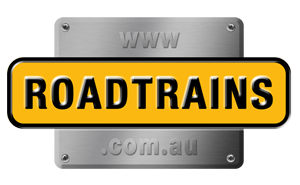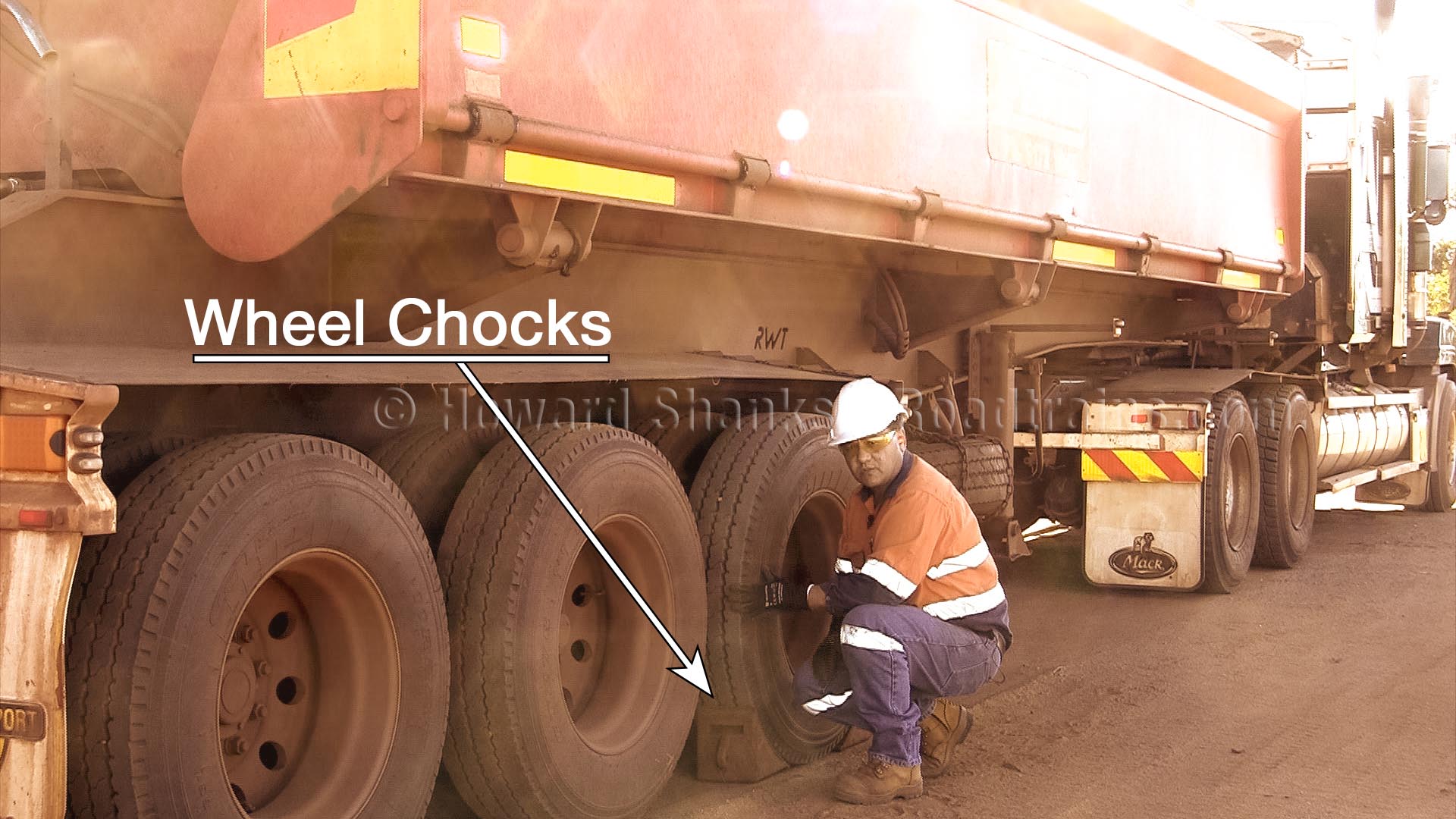How to change 10-stud truck wheels
Words and Photography by Howard Shanks
Changing a 10-Stud wheel on the side of the road is one of those inherent unpleasant tasks that occasionally requires doing when we’d least expect or like, nevertheless if performed correctly the inconvenience to your journey can be minimised.
Before commencing any tyre changing work ensure you are wearing all your PPE including:
- Safety Glasses
- Ear Protection
- Gloves
 Step One:
Step One:
Park the vehicle on a level surface in a safe location and ensure the park brake is applied. Most company policies require the an “Out of Service” or “Do Not Operate” tag to be fitted and the isolator switch locked – where fitted before any work is carried out.
Step Two:
Place wheel chooks at the front and rear of the wheel on the side not being raised, this will ensure that the vehicle does not move.
Step Three:
Note – on equipment fitted with Ten-Stud wheels crack (loosen) the nuts before lifting axle.
Ten stud wheel nuts are tightened to 600 newton meters or 442 ft/lbs torque and require either and extremely long bar to loosen. Therefore is you apply 50kg of force to loosen a wheel nut you would require an 1180 mm long bar just to crack or loosen the nut. Alternatively you can use a torque-multiplier often referred to as a nutcracker and they’re available at most reputable parts stores for around $200 – $250. But if you have a few extra dollars, it’s worth investing in a battery operated ¾ inch rattle gun which will make light work of undo all ten nuts.

When the wheel is off the ground place an axle stand or suitable block of wood under the axle to support it. Never rely on a jack to hold the axle alone.
Once the nuts have been cracked, place the jack under the axle that needs to be lifted. When the wheel is off the ground place an axle stand or suitable block of wood under the axle to support it. Never rely on a jack to hold the axle alone.
Step Four:
Clean the wheel nut threads with a wire brush and lubricate with CRC/WD40 or equivalent.
 Step Five – Loosen wheel nuts and rim removal:
Step Five – Loosen wheel nuts and rim removal:
Now the wheel is in the air and the wheel nuts loosened, you can use the truck’s wheel brace or rattle gun if available to quickly remove the wheel nuts.
Note: use a rag, container or mudguards to place all removed wheel nuts. Do not place wheel nuts in the dirt.

Do not place wheel nuts in the dirt.
Remove the outer wheel avoiding contact between the wheel and the studs, using the correct manual handling techniques. We recommend standing with your back to the wheel and knees slightly bent. Get a good grip of the rim and straighten your knees as you pull the rim off the hub, which will remove the rim rather effortlessly.
Step Seven – Rim replacement:
Ensure all hub, drum and wheel mounting faces are clean and will allow a flush fit with the mounting surface of the wheel. This is critical in attaining a secure fit. Clean all stud and threads to eliminate foreign material that may affect the correct function of the nuts. Lightly lubricate between the nut and flange, and on the outer end of the stud threads. Do not allow lubricant to contact the mounting faces of the hub/drum or wheel.

Ensure all hub, drum and wheel mounting faces are clean and will allow a flush fit with the mounting surface of the wheel.
Mount the wheel on the hub using correct manual handling techniques, we recommend using a small bar placed under the tyre which can be used as a lever to lift the rim and by moving it either to the left or right will rotate the rim to line up the stud holes with the studs.
Take care not to damage threads whilst mounting the wheel.
Install wheel nuts finger tight at the 12 o’clock and then at the 6 o’clock positions first, then fit the remaining nuts finger tight. Ensure that all the nuts rotate freely on the studs before using a rattle gun to spin them up. Care is needed to ensure the rattle gun is not used to tighten wheel nuts to levels approaching or beyond the recommended torque settings.
 Use a torque wrench to complete final tensioning of the wheel nuts to the recommended manufacturer specifications in most cases this is 600 Newton meters (442 lbs/ft) using the correct tightening sequence. The majority of manufacturers recommend starting at the 12 o’clock position then down to 6 o’clock up to 10 o’clock, down to 4 o’clock, across to 8 o’clock, across to 2 o’clock, down to 7 o’clock, up to 1 o’clock, down to 5 o’clock and finally up to 11 o’clock.
Use a torque wrench to complete final tensioning of the wheel nuts to the recommended manufacturer specifications in most cases this is 600 Newton meters (442 lbs/ft) using the correct tightening sequence. The majority of manufacturers recommend starting at the 12 o’clock position then down to 6 o’clock up to 10 o’clock, down to 4 o’clock, across to 8 o’clock, across to 2 o’clock, down to 7 o’clock, up to 1 o’clock, down to 5 o’clock and finally up to 11 o’clock.
Step Eight – Lowering axle and Packing the equipment:
Lower the axle, remove and stow the jack back in the toolbox. Remove and stow the wheel chocks. Finally remove “Out of Service” tag and de-isolate the truck.
 Step Nine – Notification of Service Procedures:
Step Nine – Notification of Service Procedures:
It is your responsibility to alert your shift partner or workshop personnel that you recently changed a wheel. Outside of the routine pre-trip tyre and wheel inspection carried out by a driver, it is imperative that the driver be aware that recent service has been performed. This service includes notification of any tyre and rim assembly removed and/or fitted.
Step Ten:
Always re-check the wheel nut tension after the vehicle has been operating for one to two hours or before 200 kilometers.





